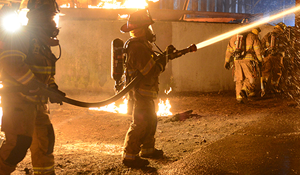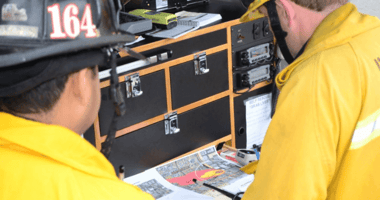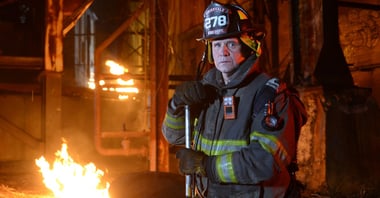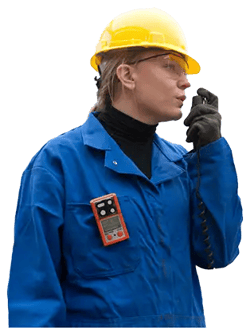 Emergency response is about speed, coordination, and clarity under pressure. When first responders step into a situation involving hazardous gases—whether it be a confined space rescue, chemical release, fire, or explosion—they’re entering an environment where seconds count and uncertainty is guaranteed. In these high-stakes moments, one of the most important tools at their disposal is their gas monitor.
Emergency response is about speed, coordination, and clarity under pressure. When first responders step into a situation involving hazardous gases—whether it be a confined space rescue, chemical release, fire, or explosion—they’re entering an environment where seconds count and uncertainty is guaranteed. In these high-stakes moments, one of the most important tools at their disposal is their gas monitor.
Not all gas detectors are created equal, and the question many teams ask is: What is the best gas detector for emergency response?
The answer lies not in a single feature, but in how a gas detection solution performs when the pressure is highest, when the environment is unpredictable, and when lives are on the line.
What Emergency Responders Really Need from Gas Detection
The best gas detector for emergency response must deliver more than just alarm notifications. It must provide fast, reliable data across a range of conditions, be simple enough to use in chaos, and, critically, communicate in real time with the broader response network.
Emergency responders often work in low-visibility, high-stress environments. Their gas detection equipment needs to function through smoke, water, heat, cold, and impact. The detector should also allow for quick configuration to match the threat, whether it’s volatile organic compounds (VOCs) during a hazmat event or oxygen depletion in a confined space. Even more important is the ability to share data in real-time. A gas reading that stays on the monitor doesn’t help the rest of the team. The best solutions transmit readings, alerts, and even responder location back to safety managers or their “command center,” enabling coordinated, informed decision-making when it matters most.
The Role of Connected Safety in Emergency and Hazmat Response
 Traditional gas detectors do their job well when hazards are predictable, but emergency response doesn’t work that way. A connected safety system where personal gas detectors, area monitors, and software platforms work together provides the redundancy, context, and clarity emergency response teams need to make safe decisions on the fly.
Traditional gas detectors do their job well when hazards are predictable, but emergency response doesn’t work that way. A connected safety system where personal gas detectors, area monitors, and software platforms work together provides the redundancy, context, and clarity emergency response teams need to make safe decisions on the fly.
For example, a personal monitor worn by a responder can track real-time exposure levels and transmit them instantly to the command post. If that responder is incapacitated or in distress, the monitor can alert others through man-down detection or panic signaling. An area monitor set up at the edge of the hot zone can detect changes in air quality before a team advances. And together, these devices form a network, allowing the entire response team to operate with shared, live intelligence. Connected solutions don’t just make emergency response procedures more efficient; they make it survivable.
Choosing the Right Gas Detectors from Industrial Scientific
At Industrial Scientific, we’ve stood by emergency responders for decades. We've seen firsthand what succeeds, what falls short, and what responders truly need when every second matters. That’s why our gas detection solutions are purpose-built to streamline the entire emergency response workflow, delivering simplicity, speed, and total situational awareness when it matters most.
Depending on your specific application, one or multiple gas monitors may be needed to ensure complete coverage. When building an effective emergency response plan, consider the following gas detectors to strengthen your team’s protection and response capabilities.
 The Ventis® Pro5 personal gas monitor is more than a multi-gas detector—it’s a lifeline. With flexible sensor configurations to detect up to five gases simultaneously, plus critical safety features like panic alerts, man-down alarms, and peer-to-peer wireless connectivity, responders are never truly alone in the field. Whether operating in confined spaces, hazardous atmospheres, or unknown environments, the Ventis Pro5 keeps workers connected and protected.
The Ventis® Pro5 personal gas monitor is more than a multi-gas detector—it’s a lifeline. With flexible sensor configurations to detect up to five gases simultaneously, plus critical safety features like panic alerts, man-down alarms, and peer-to-peer wireless connectivity, responders are never truly alone in the field. Whether operating in confined spaces, hazardous atmospheres, or unknown environments, the Ventis Pro5 keeps workers connected and protected.
When incidents scale, the Radius® BZ1 area monitor steps in to create a perimeter of safety. Designed to operate continuously for multiple days without charging, the Radius BZ1 detects up to seven gases simultaneously and can be rapidly deployed with minimal setup. Its rugged build, audible and visual alarms, and real-time local readings make it ideal for large-scale emergencies where sustained hazard awareness is critical. Paired with iNet®, our world-class software and service platform, the Radius BZ1 sends gas readings, alarm events, and worker statuses directly to safety teams anywhere in the world, turning on-scene data into immediate action.
The Vector™ AM7 are monitor represents the future of emergency response gas detection. Engineered for rapid deployment and to get a full 360-degree view of gas hazards, the Vector AM7 automatically adapts to shifting conditions like wind changes or containment breaches, ensuring hazards are tracked in real-time. Its lightweight, compact design, cellular and satellite connectivity, and integration with cloud-based monitoring software like iNet provide emergency teams with mobile, flexible control, no matter how dynamic the situation.
 The Vector AM7 also features the same, reliable SafeCore® Module found in the Radius BZ1. This ensures users have access to consistent, reliable performance, and enables seamless integration with existing Radius BZ1 systems, providing a versatile and interchangeable solution customizable to your needs and without having to overhaul your entire area monitoring program. Learn more about when to use the Radius BZ1 vs the Vector AM7, and when to use them together, by reading our Perimeter Monitoring eBook here.
The Vector AM7 also features the same, reliable SafeCore® Module found in the Radius BZ1. This ensures users have access to consistent, reliable performance, and enables seamless integration with existing Radius BZ1 systems, providing a versatile and interchangeable solution customizable to your needs and without having to overhaul your entire area monitoring program. Learn more about when to use the Radius BZ1 vs the Vector AM7, and when to use them together, by reading our Perimeter Monitoring eBook here.
Every product in the Industrial Scientific portfolio can operate independently—but they’re even more powerful when they work together. Supported by iNet, these connected technologies create a unified gas detection ecosystem that provides full situational awareness across response teams. Whether through real-time gas readings, automatic alarm notifications, or live location tracking, iNet keeps teams informed, coordinated, and ready to act the moment conditions shift.
The Bottom Line: When the Alarm Sounds, Your Gas Detector Should Lead
The best gas detector for emergency response isn’t defined by a brand or a spec sheet. It’s defined by how it performs when the pressure is highest. The best detectors deliver reliable readings, real-time alerts, and seamless communication across teams. They are rugged enough to survive any scene and smart enough to guide action the moment a hazard appears.
Emergency response can’t afford disconnected tools or siloed data. The safest teams are the best informed, and that starts with the right gas detection system. Whether you’re equipping a municipal hazmat team, an industrial response unit, or a fire department with confined space rescue responsibilities, choose a solution that is proven in the field and purpose-built for what you do. Because when the alarm sounds, and the clock starts ticking, your gas detector should do more than beep. It should lead.



